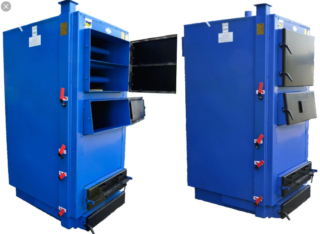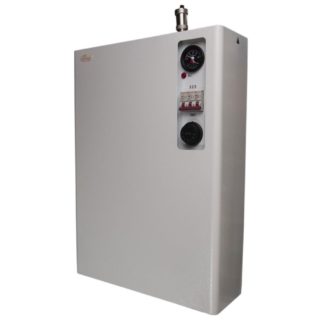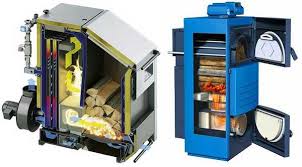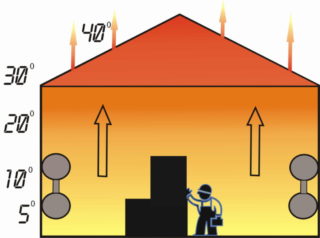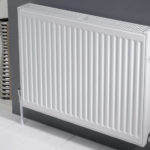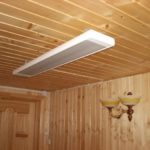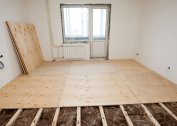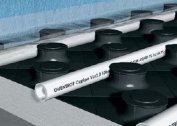There are different types of heating, which allow even the coldest winter days to maintain the temperature in the premises at a suitable level. Owners of private and apartment buildings need to choose the optimal energy source, taking into account the financial capabilities and the area of the heated space.
Types of heating by type of energy carrier
An important parameter of any heating system is the fuel used. Different energy carriers are used, each of which has certain advantages and disadvantages.
Gas heating
In an apartment building, a spacious cottage or a small one-story mansion, this option will be optimal. Gas as an energy carrier has many advantages:
- low cost;
- lack of waste;
- ease of use of equipment.
If gas heating is used, it is possible to install several temperature sensors in the rooms and connect them to the boiler, so that the temperature in the house is always maintained at the right level automatically.
One of the drawbacks is the need to locate the house near the gas pipeline. Good ventilation must also be taken into account - if a gas leak occurs due to improper installation or accidental damage to the hoses, an explosion can occur. Good ventilation will eliminate the risk.
Liquid fuel
The energy efficiency of such heating boilers is almost not inferior to gas boilers, there is very little waste left during the combustion of diesel fuel. However, fuel prices have risen sharply, so the popularity of liquid fuel boilers has fallen sharply.
In some cases, this option becomes most appropriate. Storing several tons of diesel fuel is much easier than tens of cubic meters of gas. At the same time, the risk of explosion is completely excluded - diesel fumes are not so explosive.
If it is not possible to connect to the gas pipeline, it is quite possible to consider diesel fuel as the main energy source for heating a house.
Solid fuel
Not the most convenient, but quite popular type of heating in private homes. The main advantage is versatility. Solid fuel boilers work on everything that can burn: firewood, coke, coal, peat, cardboard and paper.
In addition to versatility, safety is a plus - fuel cannot explode. Storing coal or firewood is easier than gas and diesel - any dry room or a suitable canopy will do.
When burning fuel, quite a lot of ash remains, especially if you heat it with coal. Several times a week you will have to clean the furnace of accumulated waste.
Electric
There are only two serious advantages for this energy carrier. The first is ease of use. No need to connect to the gas pipeline, load fuel into the furnace, store fuel somewhere, and dispose of ash. Electricity is consumed completely and without waste. The second is the compactness of the boiler. It is much smaller than gas or solid fuel equivalent in power, and installation is much simpler.
The main disadvantage is the high cost of electricity. This energy source is the most expensive.
An additional minus - you can not install an electric boiler everywhere. It consumes a large amount of electricity - a weak network may well not withstand the additional load.
Combined
A convenient option is a boiler that runs on several types of fuel.For example, one device can work on gas and diesel fuel - you just need to reconfigure it, which is possible for any home master. Others may run on gas, electricity or solid fuels.
Such heating is suitable in regions where gas interruptions occur in winter - pressure drops or it freezes in pipes. In this situation, you can always switch to pre-stored fuel - diesel fuel, firewood or peat.
The disadvantage of combined boilers is the higher cost compared to standard heating systems.
Principles of Heat Transfer
Convective heating
So called systems in which special elements are heated and transfer heat to the surrounding air. According to the laws of physics, it rises, replaced by the cold - thus the room gradually uniformly warms up. Almost all radiators and underfloor heating operate on this principle.
The advantage is simplicity and reliability. The disadvantage is significant thermal inertia. Increasing or decreasing the heating power, changes can be noticed only after a few hours. The upper part of the room will always be noticeably warmer than the bottom.
Infrared
Most often, infrared heating is a lamp, the power and size of which can seriously vary. They act on the same principle as the sun.
The lamp spreads infrared rays around itself, in contact with any objects, they heat them. Evenly, the entire area of the room is warmed up, and not the air in its upper part. It is enough to turn on a powerful lamp so that after a few minutes the room becomes noticeably warmer.
The disadvantage of IR heating is its relatively small capacity. It is suitable only as an additional one, or for warm regions where there are no severe frosts.
Types of heating by type of heating element
Three types of heating elements are common:
- classic radiators
- warm floor,
- infrared lamps.
- Radiators
- Warm floor
- IR lamp
Radiators are reliable and durable, but their installation is quite complicated. However, if necessary, replacing or repairing them is quite easy. Can be used with all types of heating boilers.
Installation of underfloor heating is even more difficult, in case of breakdown it will be necessary to open the entire surface of the floor to carry out repairs. In this case, the heat spreads more evenly. It can work with water as a coolant and with electricity - the cable laid in the floor just heats up and heats the room.


